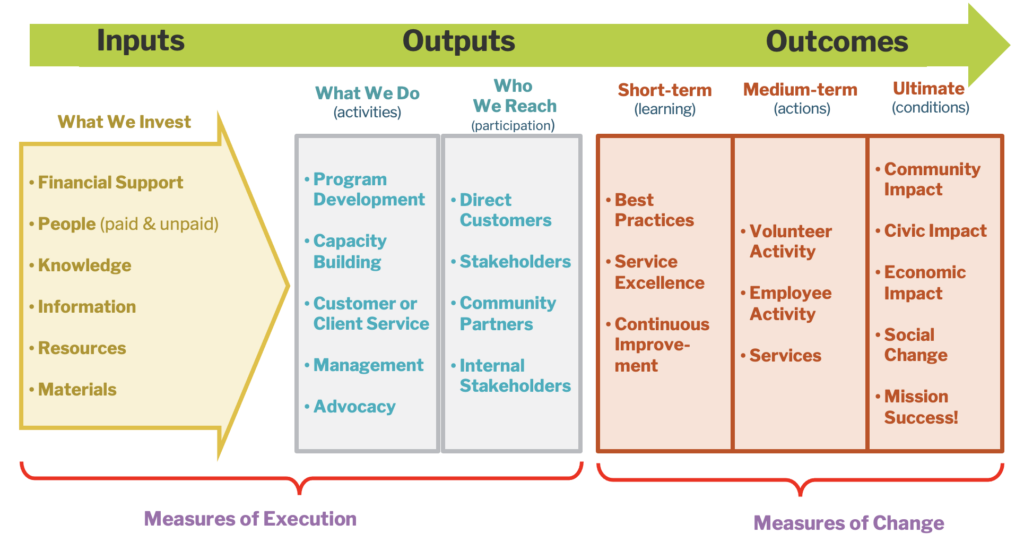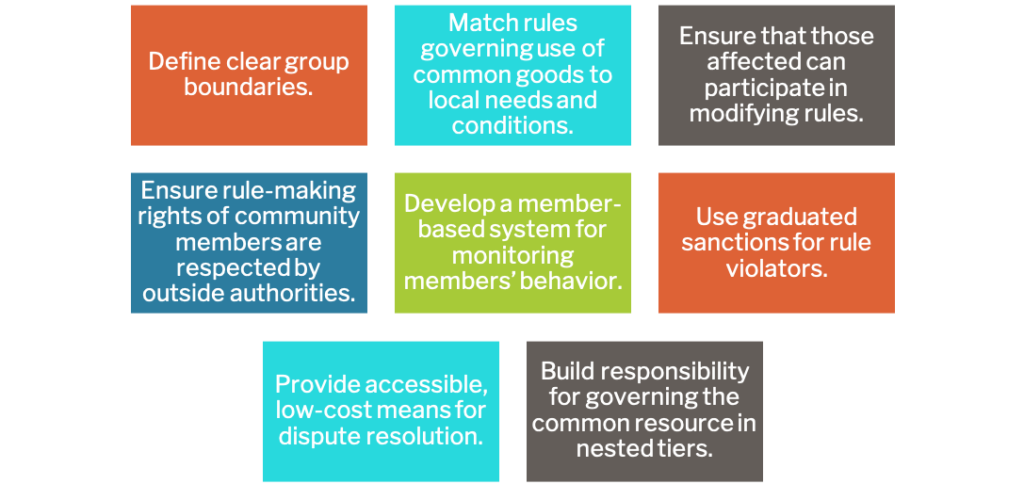Why is Volunteerism Important Right Now?
As nonprofits rebuild their workforces from two years ravaged by a pandemic, many are asking, “Why is volunteerism important to our organization?” More specifically, “Is it worth the time and effort it takes to rebuild volunteer services?”
For many nonprofits, volunteer roles were reduced to a minimum, volunteer engagement staff re-assigned or laid off, and volunteer services mothballed.
As we re-set for a new “post-pandemic” era, it’s an opportune time to rethink all aspects of our operations from service models to talent management strategies. Volunteerism is no different.
Prior to the pandemic, there was a growing interest in why volunteers are important, and measuring the impact of volunteers as human resources was a growing area of inquiry and experimentation.
If you don’t understand the return you can expect, it’s a challenge to see where nonprofit program investments make the most sense.
Now a broader question has emerged – why is volunteerism important?
As we review the reasons, it’s important to first recognize the legacy of volunteerism in our sector, which would not exist without millions of hours of contributed time by community members.
In fact, nearly all charities, causes, and movements were started 100% by volunteers; most would not exist if volunteers had not started them.
Volunteerism is how IMPORTANT things get done! Imagine all the major movements around the world … how were they accomplished? Next, think of all the single acts of kindness extended to neighbors and friend (informal volunteerism) – it all happens because communities were willing to step up.
And as new crises, conflicts, and emergencies emerge around the world, volunteers are part of the solution.
Volunteerism is also a key driver and support to nonprofit economy – both in workforce and financial contributions. As we re-build in a chaotic economy, it makes sense for organizations to figure volunteerism into their plans for surviving the current storm.
In the US, an average volunteer hour in 2022 is valued at $29.95 per hour (or a full-time equivalent annual salary of $62,296 FTE). While volunteers are not intended to supplant paid staff (and don’t want to anyway), the significant role volunteers play in helping nonprofits remain economically viable cannot be denied.
In addition, in the age of “The Great Resignation,” nonprofits must be even more purposeful in cultivating positive work cultures offering opportunities that provide real work-life balance. Volunteers can take tasks off the plates of overworked employees and partner with them, so those employees have time to focus on the most important projects in their portfolios.
Volunteer work also helps build our future workforce – many nonprofit staff came up through the ranks as a volunteer or national service member and students around the world participate internships and service-learning opportunities for school credit, build skills, and to explore career paths.
Finally, in today’s deeply divided world, it’s essential to our very survival that we find ways to build empathy and community. Volunteerism can do that – both for those served by nonprofits and through fellow volunteers. We get outside our comfort zones and personal bubbles when we volunteer. This makes us more informed citizens and residents.
Moreover, volunteering is available to anyone, regardless of means. Virtually anyone can give a little time and participate in their community in some way, even if they don’t have the funds to make financial contributions.
Why is Volunteerism Important as a Human Resourcing Strategy?
Some funders, too, understand the value of strategic investments into volunteer resources as a strategy to build capacity but have yet to fully grasp the direct connections between management practices and achieving full potential.
They have clear answers to the question: “why is volunteerism important?”
Jane Leighty Justis, Board President of the Leighty Foundation notes that, “Many funders understand the immense value of community volunteers, and the importance of a solid infrastructure, but fail to appreciate the skills, planning and support needed to harness their full potential. As a result of this disconnect there is a reluctance to provide the financial support necessary.”
Defining volunteers as human resources is, of course, a traditional way of looking at things in volunteer administration. And it’s not without merit.
It tends to align with the way we think of employees and, as such, the systems we use to engage volunteers often look remarkably similar to paid staff activities — recruitment, screening, placement, onboarding, orientation, retention, etc.
Volunteer Human Resources Logic Model
When you map it out on a logic model — a graphic theory of change representing an informed hypothesis about how things work — we see volunteers as the raw materials in which we invest (to the far left of the graphic below) rather than placing volunteers as the backbone that brings about community outcomes (on the right of the graphic).
Logic Model for Volunteers as Human Resources
When we think of volunteers as resources, we naturally consider the time they donate as a key indicator of success. So, we spend time and effort tracking hours and estimating the value of their time that we can then communicate to stakeholders.
Not all bad. It helps to know how our resources fluctuate over time to better predict a future shortage.
But this approach leaves countless stories of why volunteers are important on the table and doesn‘t solve potential issues of sustainability.
Why Volunteerism is Important: Volunteers as Natural Resources
In recent years, scholars Jeffrey Budney and Lucas Meijs have developed of new conception of volunteer energy as a social resource that constitutes the basis for organizationally-based volunteering.
They explain that volunteer energy can be compared to a human-made, renewable resource that can be grown and recycled – but is also one that is subject to misuse and misappropriation. And they point to serious concerns about the sustainability of the resource.
In contrast to an investment model, poor stewardship of volunteer talent as an energy resource can have negative impact on all facets of an organization’s work.
Leaders who consider volunteers “nice but not necessary,” may not find them worthy of investing in their recruitment, nurture, and retention.
To address this issue, they suggest that volunteer-involving organizations work collectively, rather than individually, in making volunteer energy more available, now and in the future.
Finally, they suggest that these organizations manage the “volunteer commons” and maintain this sustainable resource by borrowing from existing models for managing a “common pool” natural resource. They cite Elinor Ostrom’s 8 Principles for Managing a Commons as an example.
Elinor Ostrom’s 8 Principles for Managing a Commons
However, in all the models listed above, volunteers are viewed as a resource, which is still overlooking the number one reason why volunteers are important to nonprofits.
What would happen if, instead, we thought of them as something else altogether? What if we realized that volunteers are the backbone of all change we want to bring about?
Why Volunteers are Important: Think Catalysts
If demonstrating volunteer impact is a goal, perhaps we need to shift our perspective about why volunteers are important in our organizations.
It may be time to question the use of the volunteer human resources model as the definitive approach.
Instead, what if we defined volunteers as a catalyst?
A catalyst is defined as “a substance that increases the rate of a chemical reaction without itself undergoing any permanent chemical change.” It can also be “a person or thing that precipitates an event.”
A catalyst, in this case, is not necessarily something that is used up. It’s something that brings about change or creates the opportunity for processes to be more effective.
And if engaged effectively, isn’t that precisely what volunteers do?
Now, one might argue that volunteers — as catalysts — also undergo change themselves through service, but you get the point. Volunteers are often the “special sauce” that makes change possible. When you realize why volunteers are important and tap meaningful contributions of time and talent, amazing things happen.
When we think of volunteers as catalysts versus volunteers as human resources, we also transform how we think about their impact (moving to the right of the logic model).
We begin to wonder what specific outcomes are realized because of their contributions (and what might be missing if they weren’t here). What results would you achieve (or not) if volunteers were not active supporters?
When we think of volunteers as human catalysts, we also start to wonder how we can create the conditions that make these changemakers even more effective and powerful.
How can your management drive more purpose, engagement, motivation and growth within your team of talent? And, conversely, what is actively dampening their “can do” spirit?
Are Volunteers Human Resources or Catalysts?
When we look at volunteer impact, we need to shift our perspective about the function of volunteers in our organizations.
When we think of volunteers as resources, we naturally consider the time they donate as a key indicator of success.
When we think of volunteers as catalysts, we start to wonder if outcomes are realized because of their contributions (and what might be missing if they weren’t here). Have you fully realized why volunteers are important at your agency? Are volunteers considered simply human resources, or are they thought of as be powerful agents of change? Are they resources or catalysts?
And how would your strategy change if you changed your perspective?









